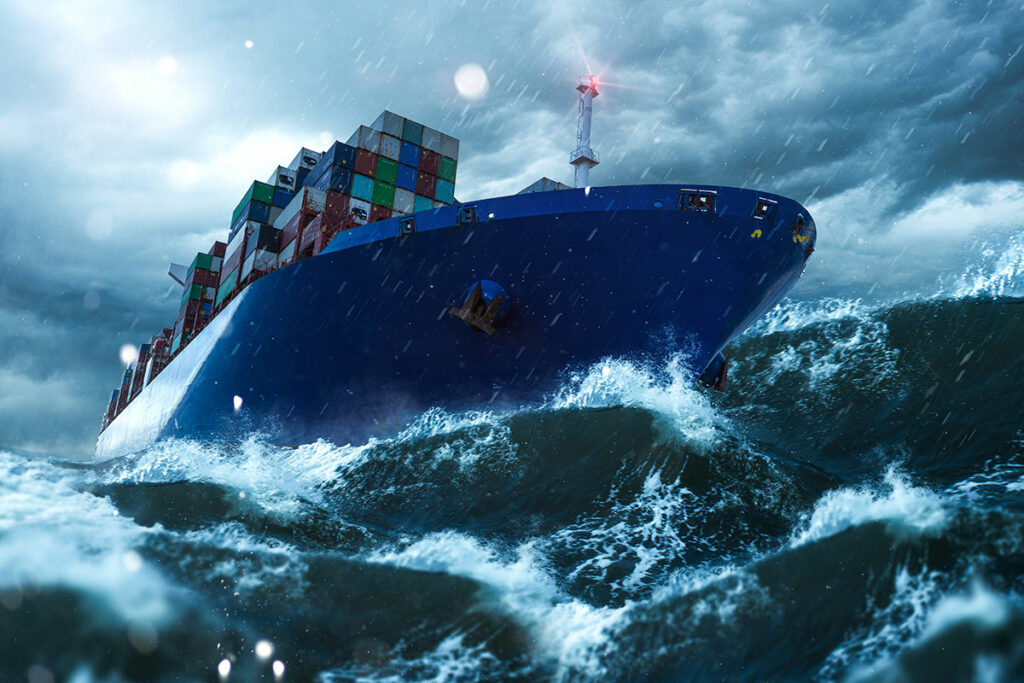We are going to know the risks of maritime transport that can occur for the goods, as well as the importance of choosing the right customized industrial packaging in order to avoid them.
It is a fact that the technological revolution has led to a significant increase in commercial maritime traffic, especially on the routes connecting the major Asian producers with the consumer countries of Europe and America:
Until a few years ago, trade with China and the United States was only accessible to large companies specialized in imports and exports. But today, any SME or self-employed entrepreneur can import or export, using their computer, all kinds of raw materials and consumer goods.
It is precisely these small entrepreneurs, unaccustomed to dealing with the problems associated with sea transport, who may be unpleasantly surprised when they receive their goods or find that the consignee refuses to receive them because they have arrived in poor condition.
Risks to which goods are exposed during maritime transport
Apart from sinkings, maritime accidents, warehouse fires and not so infrequent acts of piracy, entrepreneurs who rely on sea transport face the following additional risks:
Delivery delays
Unfortunately, delivery delays are the order of the day in shipping. Damages caused by prolonged delay include cancellation of orders, spoilage of perishable products, final loss of consolidated customers or receipt of products out of season.
In the latter sense, let us take a very illustrative example: a massive order of televisions or cell phones, specially ordered for the Christmas season, which arrives at port after the Christmas period has elapsed.
Extreme weather conditions
Here we are not referring to the ship sailing under a gale, but to the temperatures to which the goods are subjected in the holds and storage decks.
A ship’s containers, on the same transcontinental voyage, can be exposed to temperatures in excess of forty degrees Celsiusand to temperatures close to zero degrees Celsius, depending on the latitude and hemisphere in which the ship is located.
Suffice it to say that, on a voyage from China to Europe, a ship can skirt Africa in the most extreme sunshine and then face the harshest northern European winter.
Moisture and water damage: molds and corrosions
Moisture damage is another common occurrence, especially for goods involving textile fibers. Many other goods are susceptible to deterioration from moisture, such as items incorporating iron, uncoated steel, paints or wood.
In addition, it is not uncommon for goods to be rendered unusable by freshwater from rain or seawater.
Mold and corrosion due to water or humidity can be generated during stowage, unstowage or during the storage period on the vessel. Depending on the type of contract signed, the shipping company may or may not be responsible for damages.
Accidental blows and falls
Anyone who has ever watched a ship being loaded or unloaded knows that the bumping and dropping of containers is an occupational hazard for stevedores.
These incidents are unavoidable and the possibility that it is precisely our container that has suffered a blow will always be present.
Types of transport packaging for goods
The main element of protection for goods transported in a ship is the container, an essential element to avoid the risk of packaging in maritime transport. The choice of a container is not a problem, as the shipping lines themselves take care of this matter, even when special containers such as those with automated refrigeration systems are required.
Likewise, the shipping company shall ensure that the container securing and lashing systems are suitable to avoid displacement of the containers during navigation and to prevent possible heeling of the vessels due to shifting of the cargo.
But inside the container is our merchandise and this requires the protection of additional packaging, depending on its physical or constructive characteristics.
The primary mission of transport packaging is to preserve the quality and constructive integrity of the packaged goods. Thus, depending on the nature of the goods, we will have to use:
- Standard cardboard, wood or plastic packaging
- Isothermal packaging
- Packaging with anti-shock protection
- Packaging for particularly fragile goods
- Moisture-proof packaging
- 100% insulated and airtight packaging
The importance of choosing the right packaging
Businessmen who regularly transport their goods by sea are particularly careful when taking out freight insurance, ensuring that all risks are covered, including shipwrecks, acts of piracy and even compensation for damages caused by delays that exceed the foreseeable.
However, insurance does not usually cover damage from stevedoring, storage and unstowage activities, let alone any damage unrelated to these activities that could have been avoided by the use of adequate protective packaging.
It is therefore necessary to select the packaging of the goods with the same or greater care as that used when insuring maritime cargoes.
It will be of no use to have the best insurance if the insurance company can prove, in case of damage, that the packaging of the goods is not adequate to safeguard them from the handling and environmental conditions involved in any transport by ship.
Only the advice of a supplier specialized in customized industrial packaging will guarantee that our goods will arrive safely (never better said) without suffering any deterioration in quality, in the case of perishable and easily degradable products, or material damage caused by humidity or shocks. We hope we have explained everything you need to know about the risk of maritime transport in packaging.



